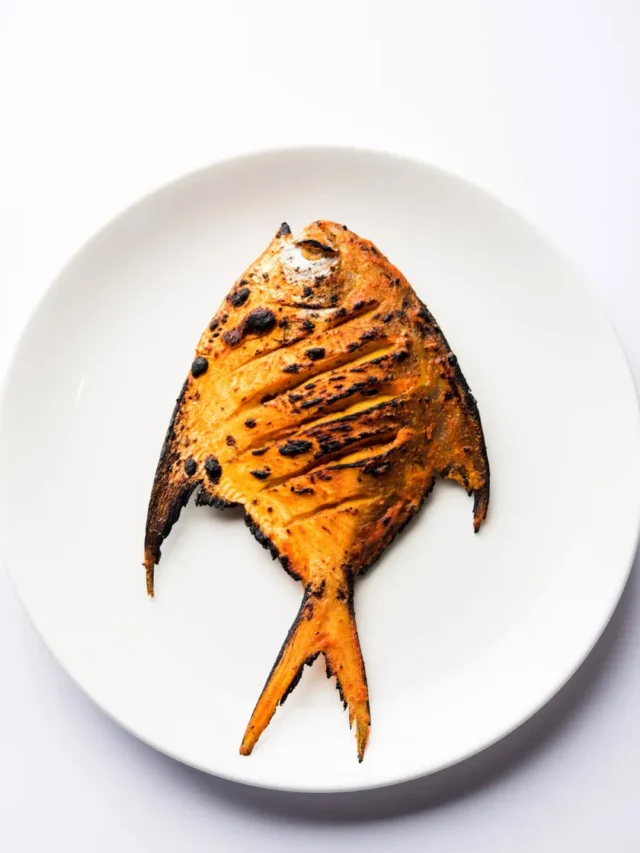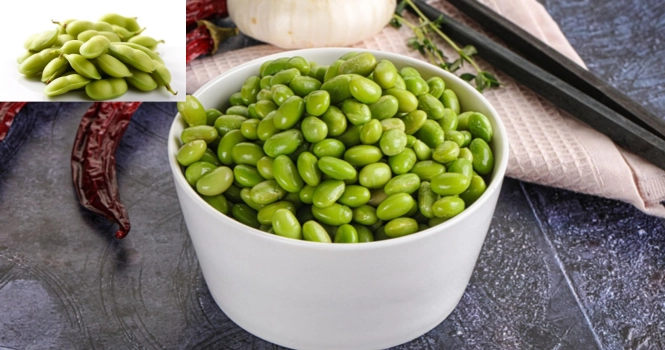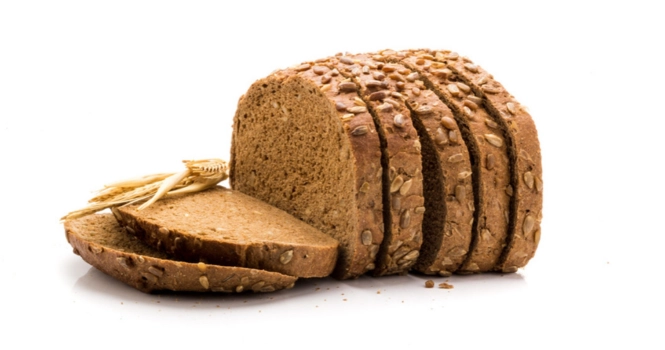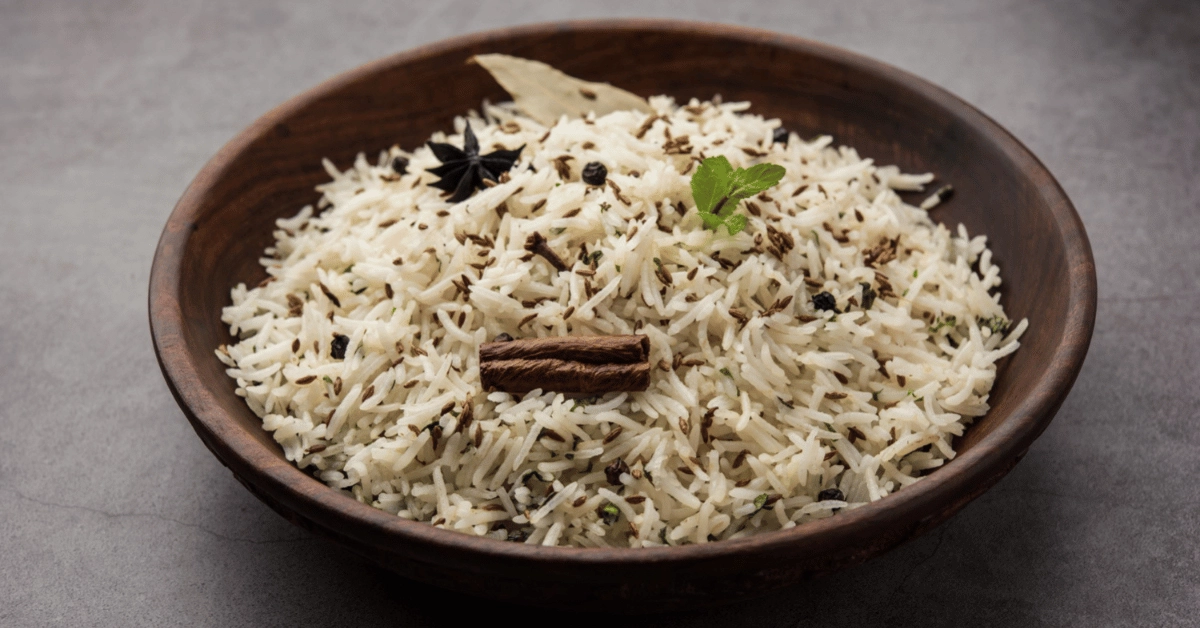Comparing Black Pomfret and White Pomfret: Which is Healthier?
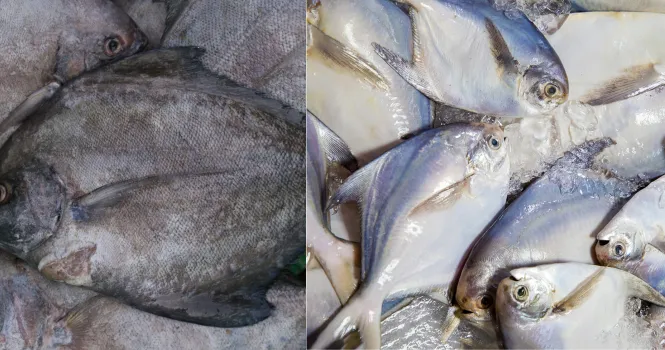
Black pomfret and white pomfret are both popular fish in various culinary traditions, especially in Asian cuisines.
They are prized for their taste and nutritional value, but there are some distinctions between the two that might influence your choice depending on your dietary preferences, cooking methods, and flavor profile interests.
Black Pomfret (Parastromateus niger)
Black pomfret is recognized for its darker skin and is commonly found in the Indian and Pacific Oceans. It’s known for its firm texture and rich, buttery flavor, making it suitable for a variety of cooking methods, including frying, grilling, and baking.
Nutritional Profile:
- Protein-Rich: Like most fish, black pomfret is a good source of high-quality protein.
- Omega-3 Fatty Acids: Contains omega-3 fatty acids, though typically in lower amounts compared to white pomfret.
- Vitamins and Minerals: Provides essential vitamins like Vitamin A and D, and minerals such as selenium and iodine.
Culinary Uses:
Black pomfret’s firm texture makes it versatile for different cooking styles. It’s often used in curries and stews because it holds up well during cooking.
White Pomfret (Pampus argenteus)
White pomfret has a silver-white appearance and is highly valued in many Asian countries for its delicate, sweet flavor and soft, flaky texture. It’s found in the waters of the Indian Ocean and the Western Pacific.
Nutritional Profile:
- Lean Protein: Offers a lean source of protein, making it a great option for those looking to maintain or lose weight.
- Higher Omega-3s: Generally contains a higher level of omega-3 fatty acids compared to black pomfret, contributing to cardiovascular health and anti-inflammatory benefits.
- Vitamins and Minerals: Rich in B vitamins, particularly Vitamin B12, and minerals like potassium and magnesium.
Culinary Uses:
White pomfret is preferred for steaming or pan-frying due to its delicate texture. It’s commonly served in celebratory meals and special occasions, especially in Chinese cuisine.
Comparison and Considerations
1. Taste and Texture: Black pomfret has a more pronounced flavor and firmer texture, making it suitable for stronger spices and varied cooking methods. White pomfret is appreciated for its subtle sweetness and soft texture, ideal for steaming and light seasoning.
2. Nutritional Content: While both fish are good sources of protein and essential nutrients, white pomfret tends to have a higher content of omega-3 fatty acids, making it a slightly better option for heart health.
3. Cooking Methods: The choice between black and white pomfret may also depend on the intended cooking method. Black pomfret’s firmer texture suits grilling and frying, while white pomfret is excellent for steaming or gentle pan-frying.
4. Availability and Price: Availability can vary by region, and there might be significant price differences, with white pomfret often being the more expensive option due to its high demand in certain cuisines.
5. Sustainability: It’s also worth considering the sustainability of the fish you’re choosing. Check local and international seafood guides to ensure that the pomfret you’re buying is not overfished or caught in ways that harm the environment.
Frequently Asked Questions
White pomfret (Pampus argenteus) is considered a delicacy in various cuisines, particularly in South and Southeast Asia. Its higher price compared to many other fish varieties can be attributed to several factors:
1. High Demand: White pomfret is highly valued for its delicate white flesh, subtle flavor, and texture, making it popular among seafood enthusiasts. Its demand in both local and international markets, especially in upscale restaurants and among consumers who prefer premium seafood, contributes to its higher price.
2. Fishing and Harvesting Challenges: White pomfret is often caught in the wild, and overfishing has led to a decrease in population in some areas. This scarcity, combined with the challenges of sustainable fishing practices, can make it harder to catch in significant quantities, thus driving up the cost.
3. Seasonality: Like many seafood varieties, the availability of white pomfret can be seasonal, depending on breeding patterns and environmental conditions. Seasonal fluctuations can affect supply and, consequently, prices.
4. Supply Chain and Distribution Costs: The cost of transporting and handling seafood, especially to maintain freshness over long distances, can be significant. White pomfret often requires careful handling and cold storage to preserve its quality, contributing to higher retail prices.
5. Market Preferences: In some cultures, white pomfret is considered a premium fish, often associated with festive occasions and special meals. This cultural preference can drive up demand and prices, especially during certain times of the year.
6. Aquaculture and Farming Limitations: While aquaculture has become a significant source for many types of seafood, successfully farming white pomfret on a large scale can be challenging due to their specific habitat and dietary requirements. This limitation on increasing supply through farming contributes to its exclusivity and higher price.



